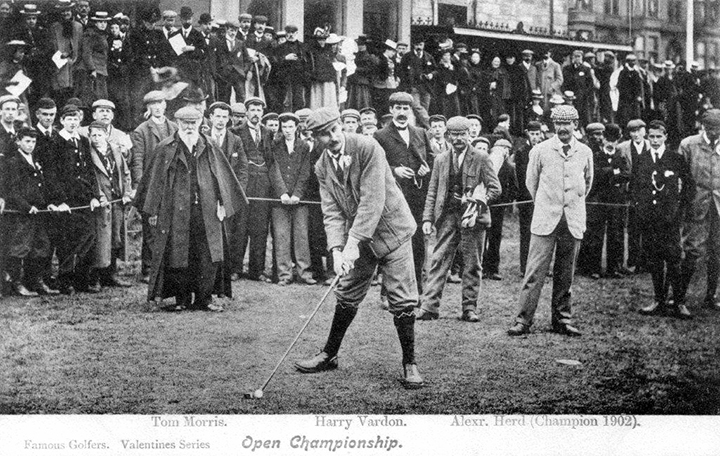A guide to collecting vintage golf postcards.
By David Low
Introduction
The golf ‘boom’ around the turn of the 20th century conveniently coincided with the golden age of picture postcards, which now provides the present-day golf historian with a fascinating insight into the game, and its personalities, of that era. Millions of postcards were sent each year and the up-and-coming pastime of golf was a popular subject for the publishers. Thankfully, many of the recipients stored their cards in albums with the result that large numbers still exist to this day. The internet revolution encouraged dealers to split albums, extracting the very best for the market place.
By far the largest majority of golf postcards published between 1900 and WW1 are British or European. It was not until after WW1 that the U.S. golf postcard came into its own, though earlier rare animated examples of Ekwanock in Vermont and the early New Hampshire, courses can be found. There are also early cards of Shinnecock, National, Brookline and Myopia but non to compare with the early Patrick or Fletcher animated cards of the ‘Home of Golf’ at St Andrews.
Categories.
The majority of early golf postcards fall into the topographical, or topo, category. Mainly showing views of the course and clubhouse they provide the historian with photographic evidence of golf clubs past and present and are rarely of any monetary value.
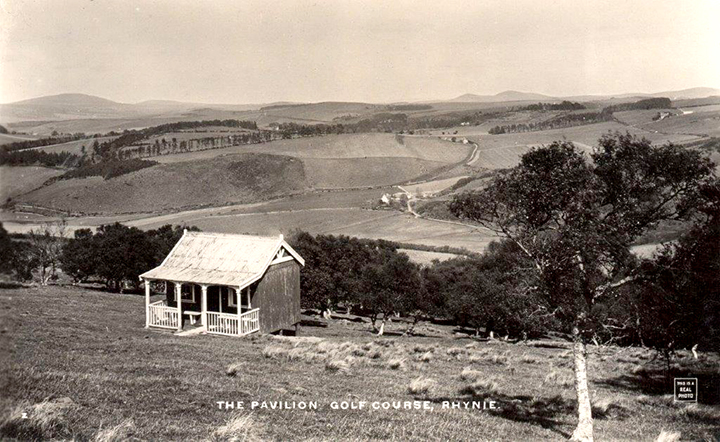
The topographical cards that do whet the appetite of the collector are those animated examples of the stars of the day, Championships, exhibition matches and course and clubhouse openings. The large publishing companies produced many series of postcards featuring the top golfers, both amateur and professional, and it is these examples that the collector is on the lookout for. The completion of a series, or set of postcards is the ambition of all serious collectors, though this is very rarely achieved. Postcards of exhibition matches and course, or clubhouse openings, were, in the main, produced by the small local professional photographer and such examples form a very important part of any collection.
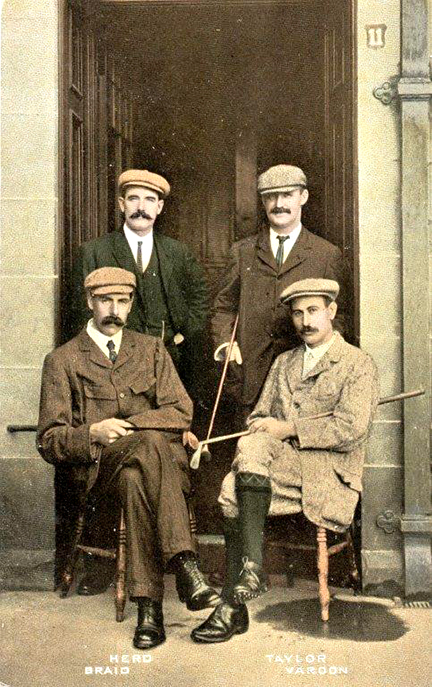
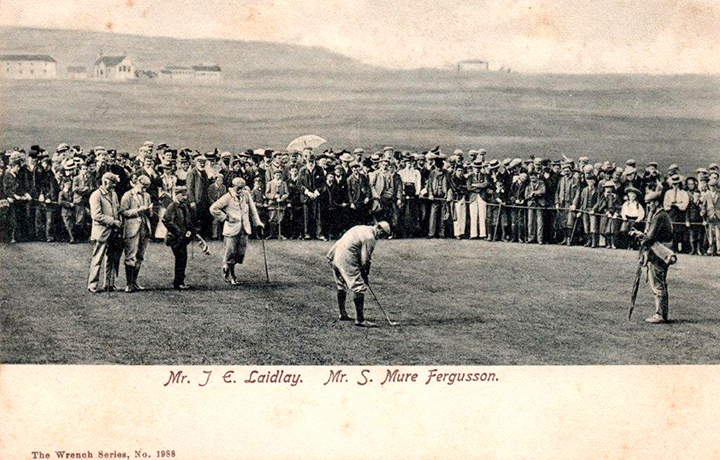
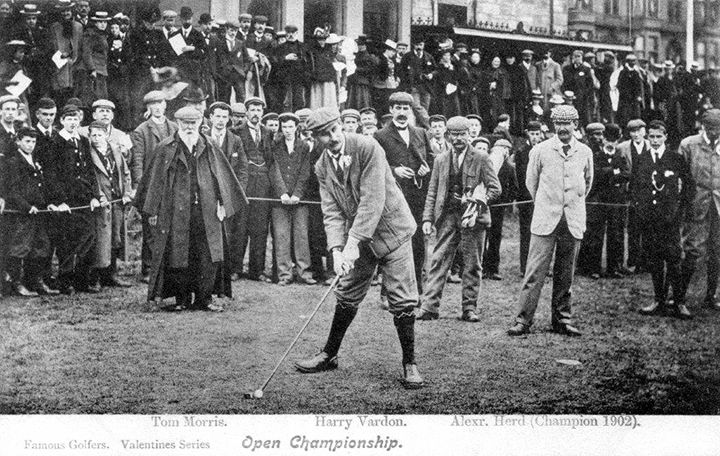
Topographical postcards may be either printed or real photograph (RP) The main publishers produced printed postcards in bulk, mainly of the top courses linked to holiday resorts, and rarely of any value. They include views of golf at the likes of Carnoustie, North Berwick, Gleneagles which, though of interest are valueless. However, St Andrews was the subject of series of animated cards by Wrench, Valentines, Fletcher and Patrick’s which are of great interest to the collector and can attract significant prices.
The golfing ‘gems’ are usually to be found in the ‘RP’ category as they were usually issued by the local photographer and often feature courses that have long ceased to exist. Though not of special monetary value they are, to the historian, important additions to a collection. The main publishers did produce a small number of ‘RP’ postcards, usually in a series, and often of important golfing occasions.
The second largest category of golf related postcards are of the ‘humorous’ variety and rarely are of any value. This is a specialist subject and the new collector will need to carefully research the subject before dipping his toe in the market. Seek out an experienced collector for advice. In a similar vein the entertainment stars of the day were featured in golfing poses, though due to the vast numbers produced postcards in this category are of minimal value.
Look out for advertising postcards as they rarely appear on the market and subsequently often attract good prices. Early golf ball manufacturers such as Springvale were keen to use the postcard to advertise their products.
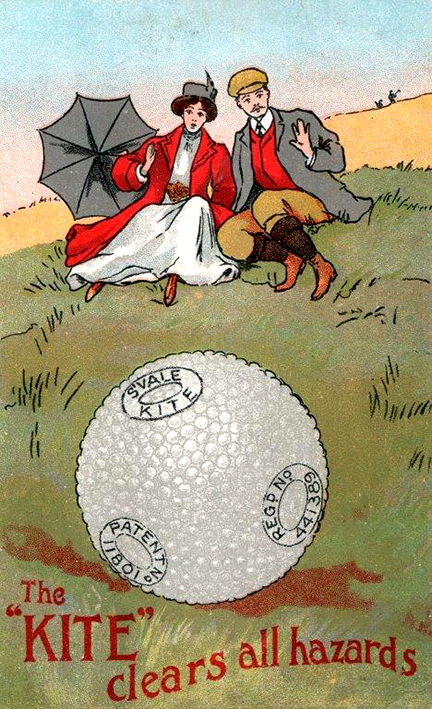
The railway companies, clothing and whisky manufactures also were active in this area. Early postcards were also issued featuring royalty and political figures, collectable, though rarely of any great value.
The Market Place.
To build a new collection access to the internet is essential, especially to the main websites such as eBay, which, since its introduction in 1995 has completely revolutionised postcard collecting. It is well worth spending time trawling the likes of eBay to gain valuable knowledge on the different range of values. Postcards may be sold on an auction, or ‘buy now’ basis with the former providing the bulk of the hidden ‘gems’ Widen your search by searching ‘golfers’, ‘clubhouses’, ‘bunkers’ or ‘links’ as this often reveals rare cards that fellow collectors have missed. Include Delcampe, the European version of eBay. As well as the cards of golf on the continent there is the occasional ‘gem’ of a U.K. or American card. The early golf cards on Delcampe include collectable examples from Europe’s oldest Club, Pau, nestling at the foot of the Pyrenees, plus the resort courses of the Normandy and Belgian coast.
Find out the names of the smaller auction companies who run online ‘timed’ dedicated golf auctions and ask to be added to their mailing lists. This is the type of auction where you will find the top-quality examples as collections are broken up and put up for sale. Be aware that you will be up against the experienced collector and best to set your upper limits. Buyer’s premium and taxes are also added to the hammer price increasing the final figure by around 25%. Since the 2020 Covid pandemic the original type of auction, where you attended in person, has all but disappeared. This is a pity as they were often social occasions where collectors met up with fellow collectors.
Another area to consider are postcard, or antique paper fairs, which are always worth a visit as the dealers attending will have their offering of golf postcards in special sections ready for examination.
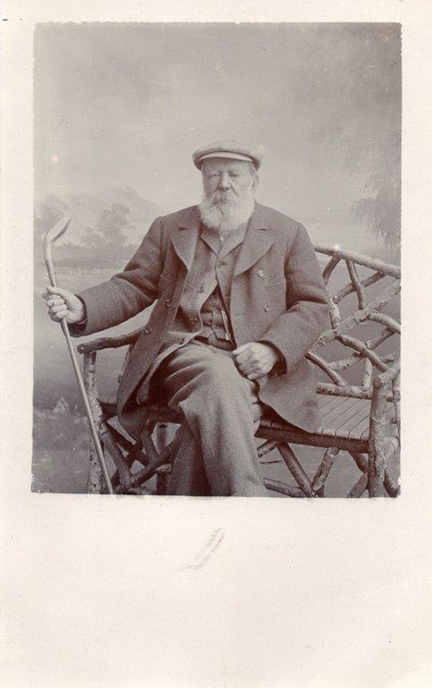
Prices are invariably high but the dealers are always open to negotiation. Such events are more suited to the experienced collector but still nevertheless worthy of a visit for the novice. Arrive early for the rich pickings.
Finally, use search engines to find dedicated sites such as ‘Golf on Old Picture Postcards’ where you will find a wealth of cards from low value to the top examples. Such sites are also an important source of knowledge of monetary values. If you buy always negotiate for a better deal.
Condition.
It is always preferable to have a rare card in pristine condition though this is usually only the case where they have not been posted. The humble postcard is a flimsy piece of cardboard which may have passed though many hands before, possibly, finishing up in an album with the consequential corner album creases. The postcard may also have edge nibbles, foxing or franking indentations. The very early cards with undivided backs will have writing to the face which is completely acceptable. However, if it is a rare example a collector will ignore condition just to include it in their collection.
To a golf historian the subject is of endless fascination. Good luck with your endeavour’s.

